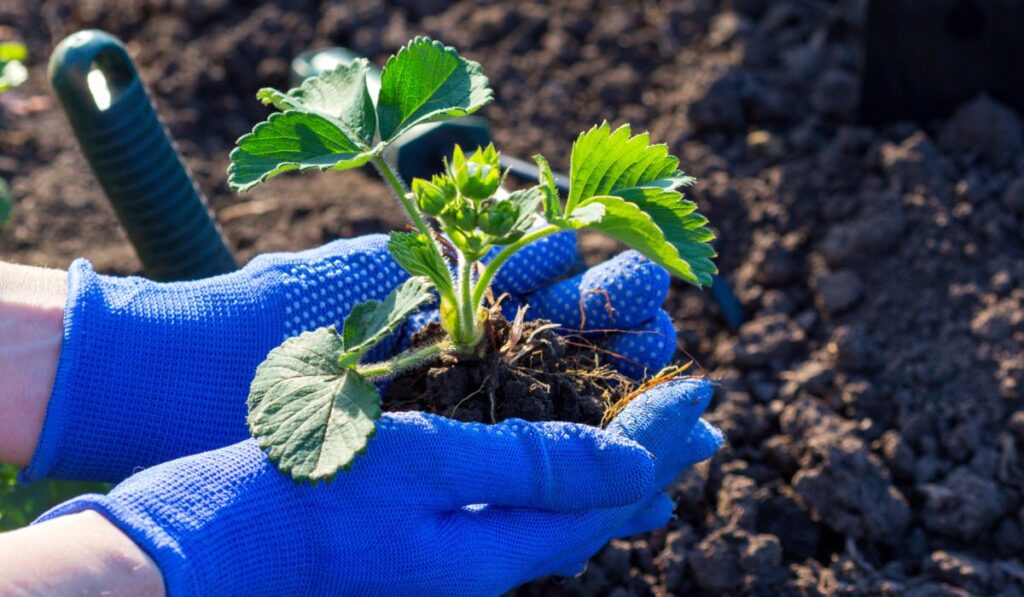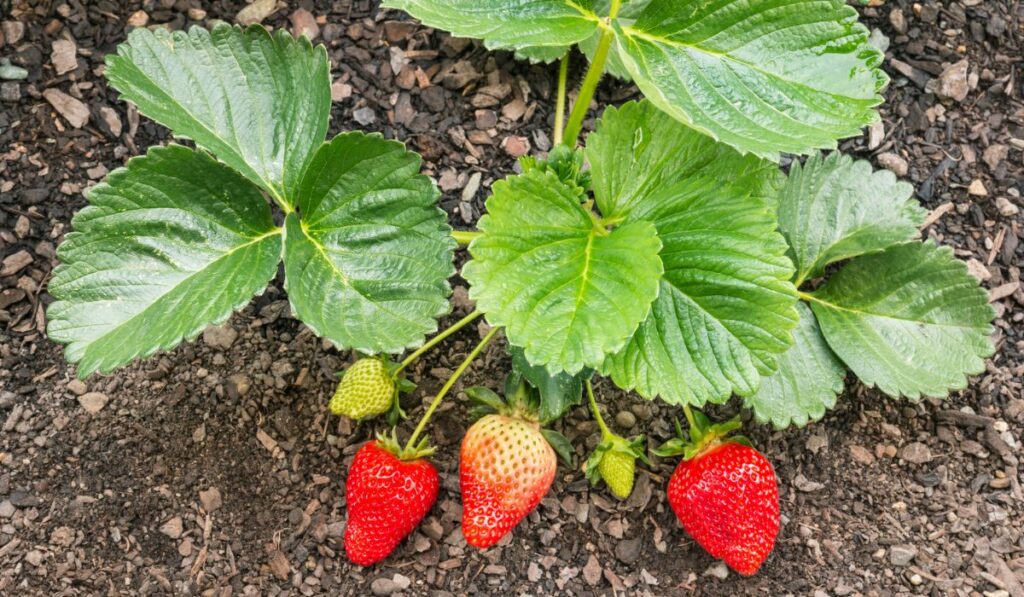Many people want to grow their own fruits and vegetables—and strawberries are a tasty and popular fruit for people to grow. But for those who don’t do their research, they might not thrive. So just how exactly do you plant strawberries for the best results?
To grow some great strawberries, make sure you pick your time well. Strawberries grow in spring, summer, and early fall. For the best results, provide full sun, prune them appropriately, and keep pests away from them.
So what works for one fruit or vegetable might not work for another, and strawberries are no different. So now, let’s take a closer look at planting strawberries, including what season they grow best in, how much sunlight they need, and how to prune and harvest them.
What Season Do Strawberries Grow Best in?

The first thing you need to know to produce the biggest, juiciest strawberries is when to plant them. Depending on when you plant strawberries, you’ll see a vast difference in quality, so it’s essential to get your timing right.
The best idea is to plant them in late spring (around the end of April or May). This is because they will produce some in spring, summer, and even at the beginning of fall before going away in the winter.
So while you could plant some in summer and may even get away with it in early fall, you’re not going to see as many as if you had done it a little earlier.
How early or late you are can also depend on your state. Hotter states may be able to plant their strawberries earlier than colder ones, which will have to wait longer for spring to heat up.
Like most fruit and vegetables, you will not see good results from strawberries in the colder months. Therefore, anything past September is likely a no-go.
What Type of Soil is Best for Planting Strawberries?
The soil you plant your strawberries in should have excellent drainage. For the best results, you can mix store-bought soil specifically formulated for plants like this with natural soil—for example, Miracle-Gro Performance Organics All Purpose Container Mix (on Amazon). Use a 50/50 mix for the best results.
You’ll also have to keep the soil moist by watering it frequently. The top level should stay moist, but ensure you don’t drown the soil in water, which can end up having the opposite of the desired effect.
Do Strawberry Plants Prefer Full or Partial Sun?
Strawberries prefer full sun. While you can get away with partial sun, they produce less fruit and may not get as large and juicy. For the best results, find a spot in your yard where they can bask in the sun for as long as it’s out. There’s no such as too much sun for strawberries!
If you provide your strawberries with no sun at all, the plants will not bear fruit and will die. This is because they cannot survive without it.
How Far Apart Should I Plant Strawberries?
If possible, you should space them around fifteen inches apart and no less than twelve inches. This should be enough room for them to grow. There’s no need to go any further apart than twenty inches, as your plants shouldn’t reach that far.
The further apart, though, the better, as this gives you time to remove runners and ensures the plants don’t interfere with each other.
How Long Does it Take for Strawberries to Produce Fruit?
From when you start growing the strawberries to harvesting them, it can take up to three months for them to produce fruit. This is a slow process, and it’s important to remember that you’ll bear the rewards year after year and be patient with the plants in the meantime.
How to Prune Strawberries
The first thing you need to know about pruning strawberries is that green leaves should always be left alone. This is because you want to preserve the green leaves and only get rid of obviously diseased or rotting foliage as, otherwise, you could damage the plant.
A big reason for getting rid of dead-weight leaves is that they may eat up moisture and sunlight that could be going to other parts of the plant, which are still healthy and helping to produce strawberries.
You should also make sure you remove what’s known as runners. These connections will run away from the strawberry plant in a horizontal direction, ready to create other plants. They can quickly get out of control, so make sure you cut them back and ensure the plant stays contained.
How to Harvest Strawberries
As for harvesting strawberries, you should keep an eye on them for when the time is right—depending on what kind of plant you have. For example, some plants are designed only to produce fruit at certain times, whereas they can produce a cluster in spring, summer, and early fall.
The strawberries should be large and primarily bright red. They should also have a firm texture. At this point, you can pluck them from the plant. However, it’s a good idea not to leave them there for long, as you’ll want to ensure new strawberries can grow and avoid attracting unnecessary pests.
Ensure you don’t pull them from the plant, as you could damage it. Instead, cut the stem and remove the berry only when disconnected.
After harvesting strawberries, you should also mow the plants to allow new ones to grow.
Do Strawberries Grow Every Year?

Ever-bearing strawberry plants can grow every year if well taken care of. Some people start over every year with new plants, though others argue that plants produce better fruit when they’re older and have been taken care of rather than starting over.
Common Problems with Growing Strawberries
Whether you’re a beginner at growing fruit or have just started dabbling in strawberries, there are some problems you might face. It’s essential to be aware of what they are so you can prevent them.
Pests
Unfortunately, pests are attracted to strawberries. While bees are necessary to pollinate the plants, other creatures should not be as welcome.
Surrounding your strawberries with garlic and onions should be enough to keep rats and mice away, and you can also keep them under a fence to keep the birds away (with enough room for bees to still get in).
If there are insects, consider treating the area around the plants, but make sure you don’t use something that will also damage the strawberry plants.
Contaminated Soil
It’s not a good idea to plant strawberries in soil once used to grow vegetables, particularly tomatoes, eggplant, and others. This soil can contain diseases that will quickly kill your strawberry plant.
Not Pruning Flowers
If you have June-bearing strawberry plants, it’s important to pinch off the flowers that grow. This makes room for the strawberries to come through, and the flowers aren’t necessary at all.
Not Keeping the Soil Moist
It’s essential to water your strawberry plants and ensure the soil stays moist. While you shouldn’t overdo it, the plants need the water to thrive, and they will die without it—leaving you having to start all over again.
To Finish Up
Strawberries are a great fruit to grow, and with some time and effort to learn, beginners can produce some large juicy berries.
It is crucial, however, to harvest them quickly and not leave them hanging when they’re ready; prune them correctly and often, and keep them safe from pests. If you do this and give them full sun and pick your time well, they’ll thrive.
